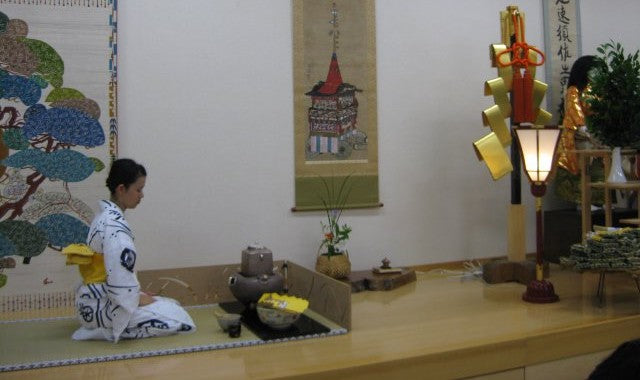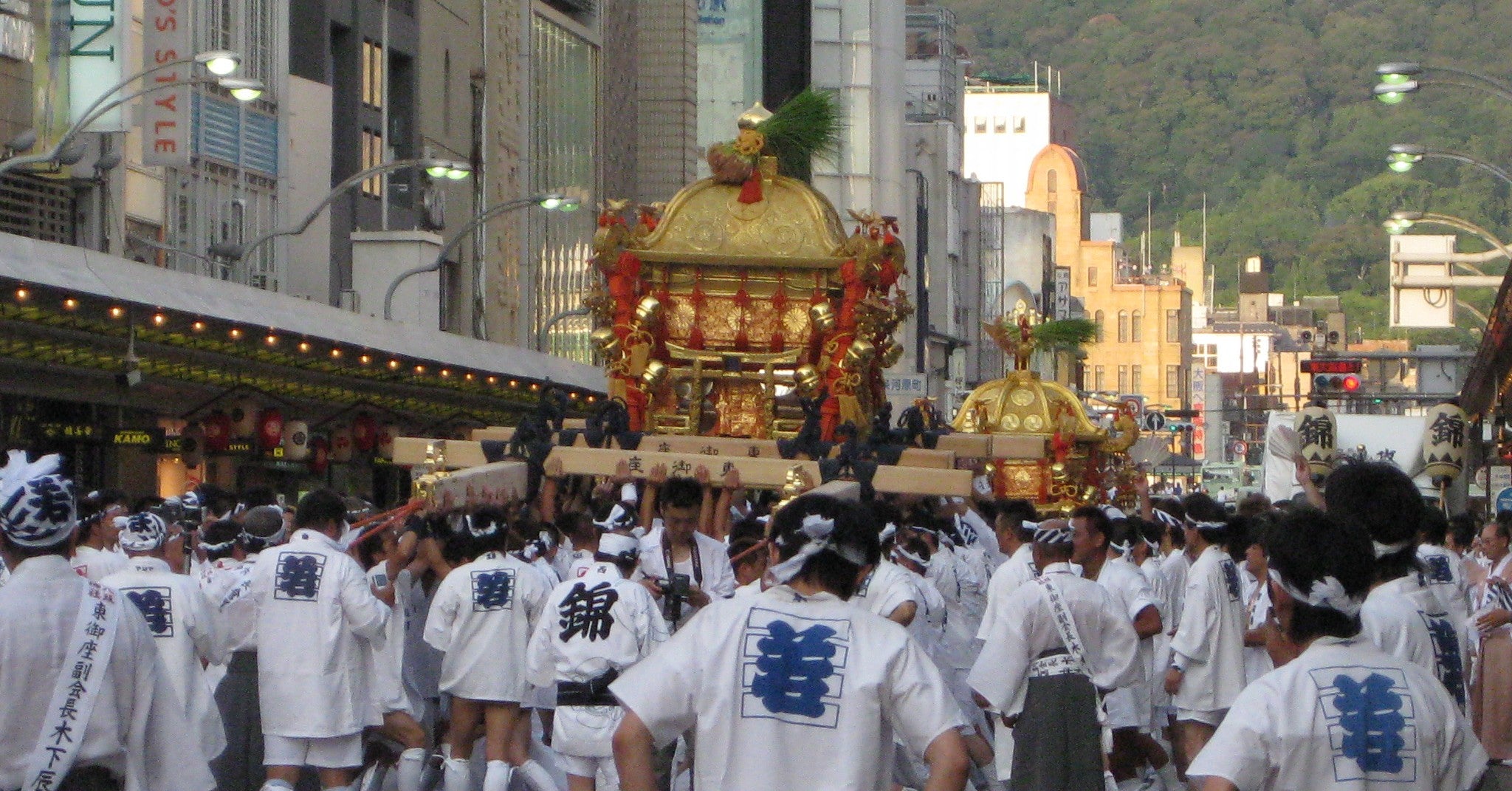Article: Yamaboko floats related to japanese tea

Yamaboko floats related to japanese tea
Kikusuiboko tea ceremonies
The float was named after the “Kikusui well” in its neighborhood. Tea ceremonies by the Omotesenke school, the Urasenke school and the Enshū school are held in a clearly defined order for four days from July 13 to July 16 at the Kaisho. In the event, you can enjoy the famous Japanese confectionery “Shitatari” from the Kyoto-based confectionery shop Kamehironaga and receive a ceramic plate. Each year, the design of the plate changes, which is also part of the fun.



Tea is usually prepared in front of the shintai of the Kikusuiboko float. The custom of drinking tea at the Kaisho during the Gion Matsuri originally comes from food offerings made to the shintai.
Ninaichaya
Ninaichaya was the name for movable teahouses with all the necessary equipment and utensils such as furogama tea kettles, mizusachi (water containers for Tea ceremony), tea bowls and tea whisks, etc., required to perform traditional Japanese tea ceremony. Everything was contained inside two boxes carried with a pole on the shoulders.
There were used to be Ninaichaya accompanying the floats during Gion Matsuri grand parades. They were serving tea during stopovers when the float undertook the amazing tsuji-mawashi (corner-turning) for example. Still, only town officials wearing the Kamishimo dress were allowed to drink tea. The pullers were not allowed to. Ninaichaya accompanying Yamaboko floats can be seen in illustrations from the Edo period (1603-1868). But during the 1950s, they completely disappeared, partly because of the spread of cold beverages and the shortening of the procession time.
Kikusuiboko floats’s Ninaichaya
The Kikutsuiboko float was the first float to restore the Ninaichaya. Today, iced matcha is also served.

Ashikariyama float’s Ninaichaya
In 2011, a one-meter tall Ninaichaya made of wood was found in the back of the warehouse. Inside a shelf that simply stretch into shape like an accordion, a small cupboard, a bamboo pot stand, and a teakettle were found among other things. It is still unclear when this Ninaichaya was made or even used. “Ashikariyama” (芦刈) was written on the surface using the old character form for “Ashi” (芦).

Taishiyama float’s Ninaichaya
In 2013, The Taishiyama Preservation Association restored the float’s Ninaichaya. It is approximatively one meter long, made of wood with the logo of the association (太) watermarked.




Leave a comment
This site is protected by hCaptcha and the hCaptcha Privacy Policy and Terms of Service apply.